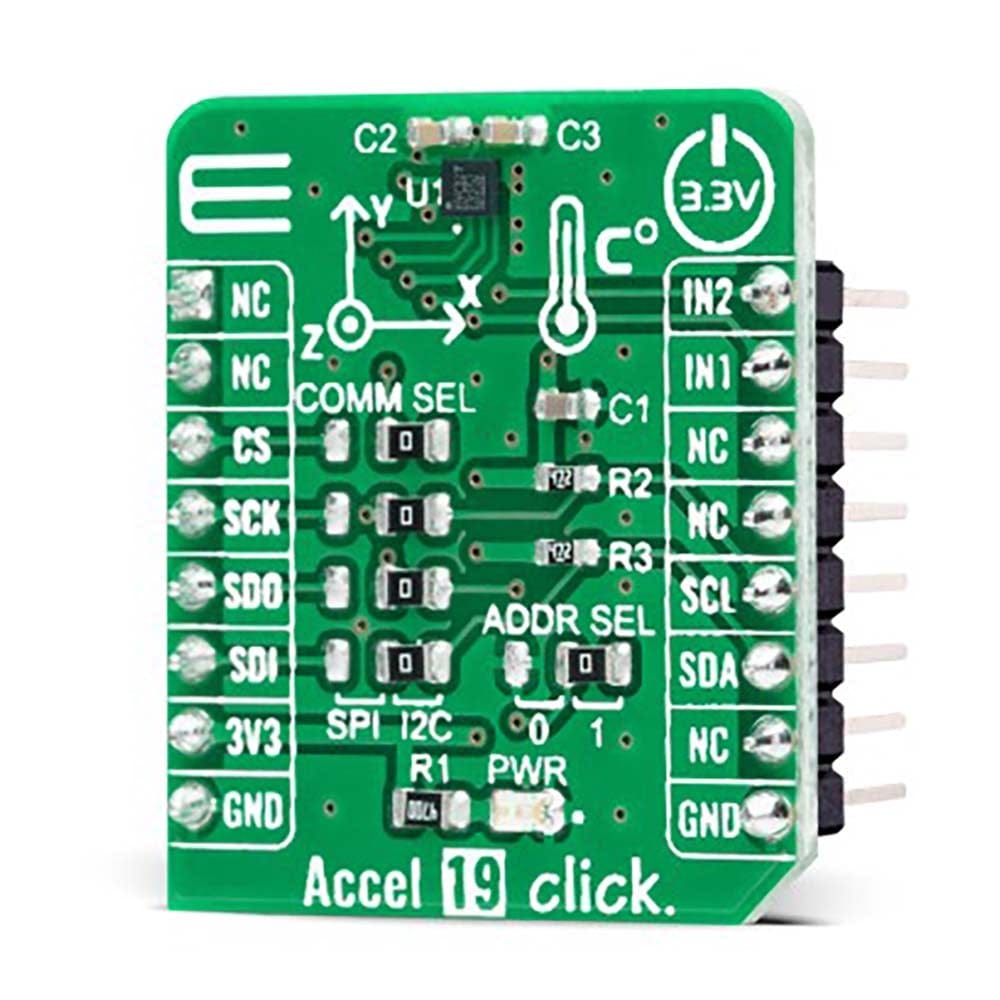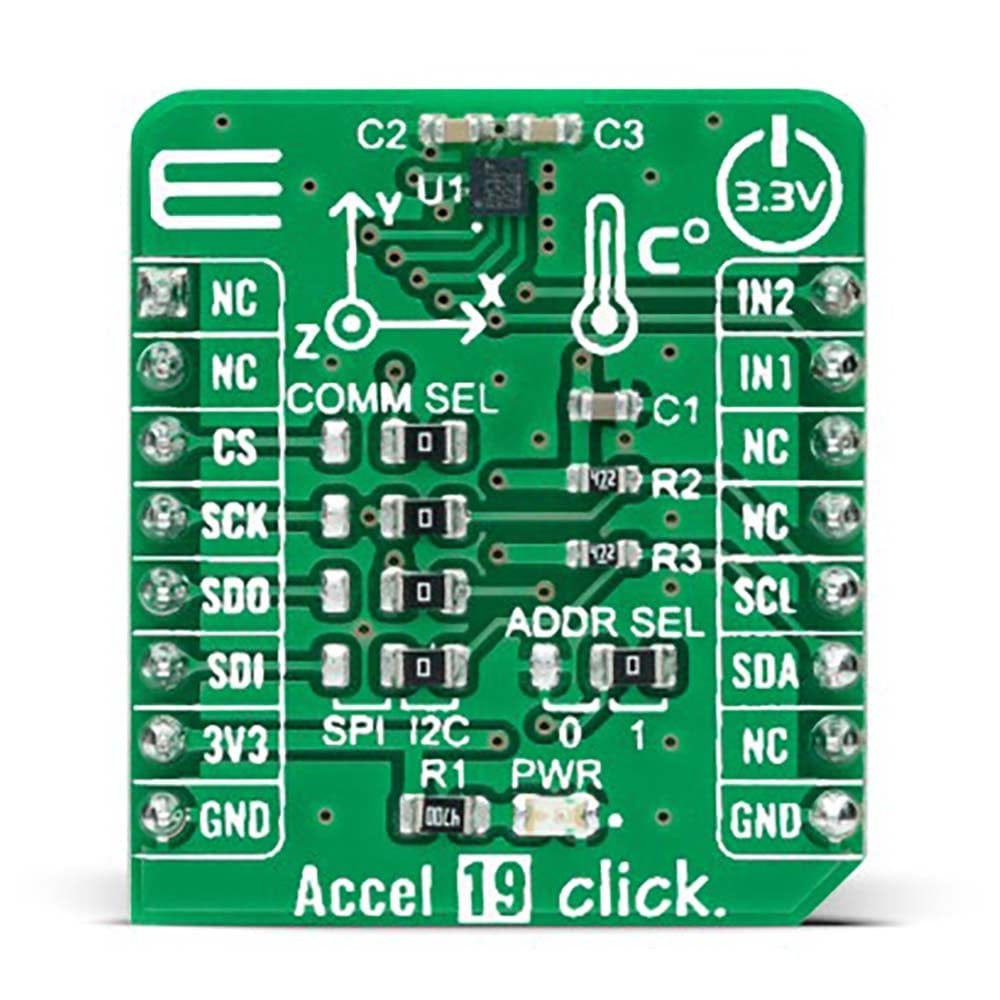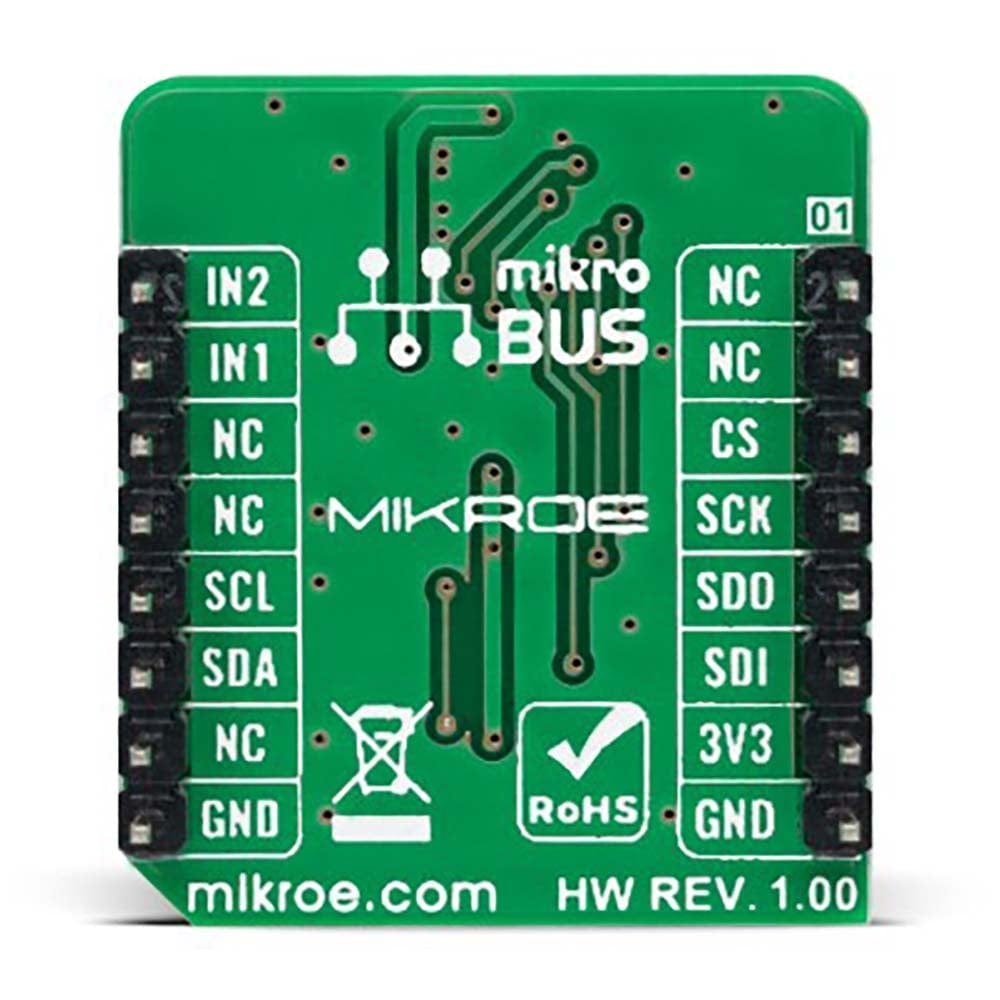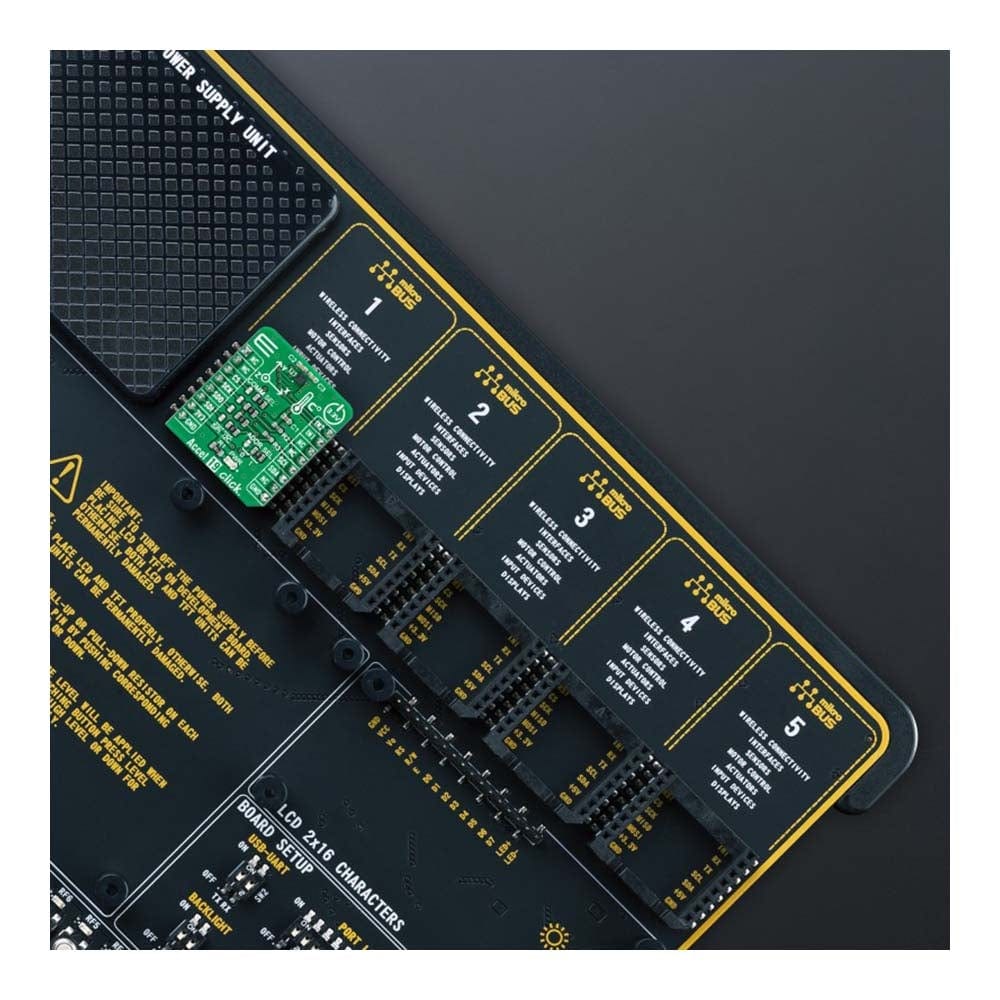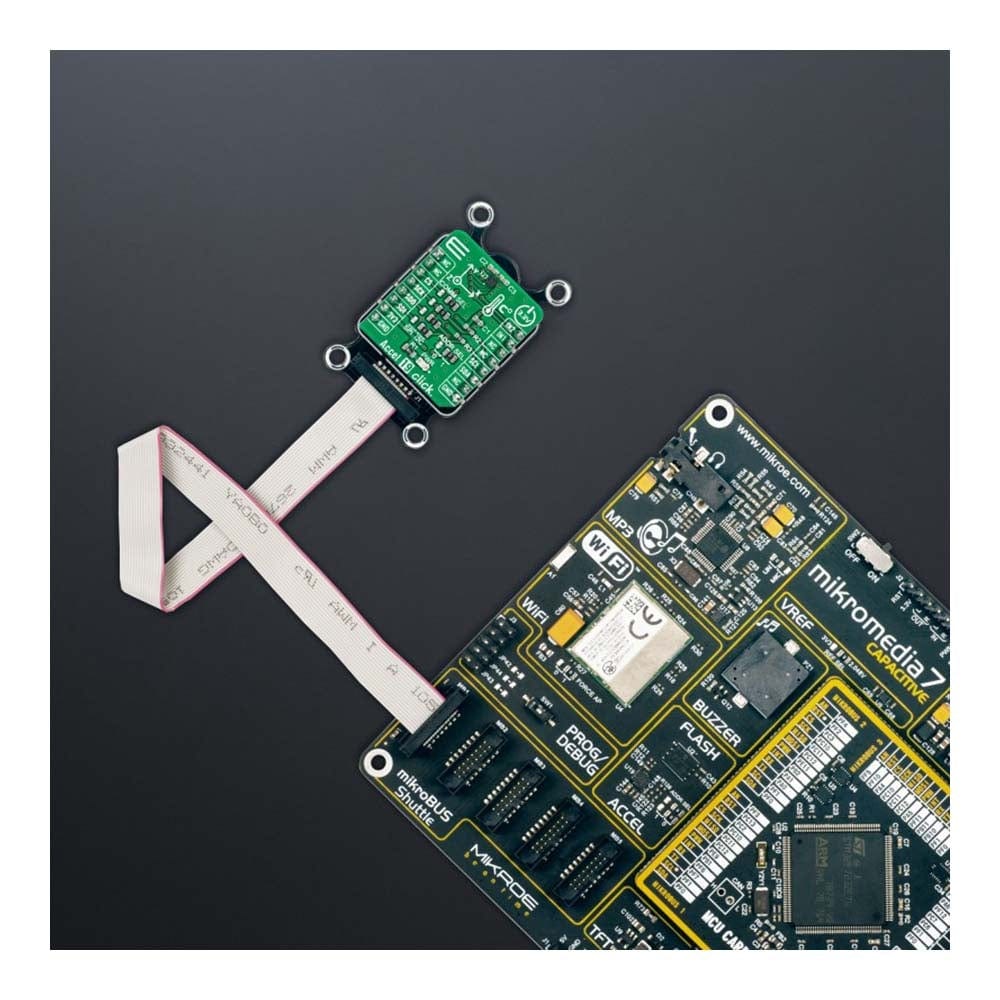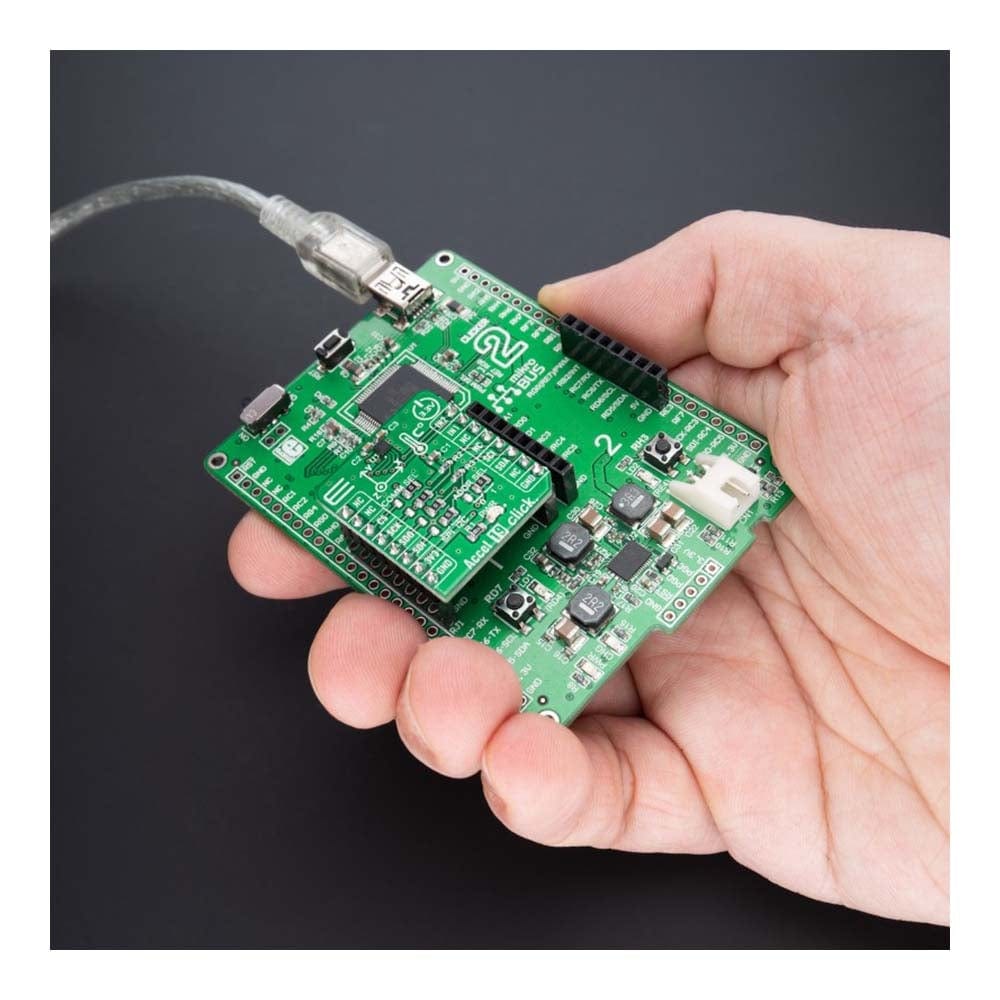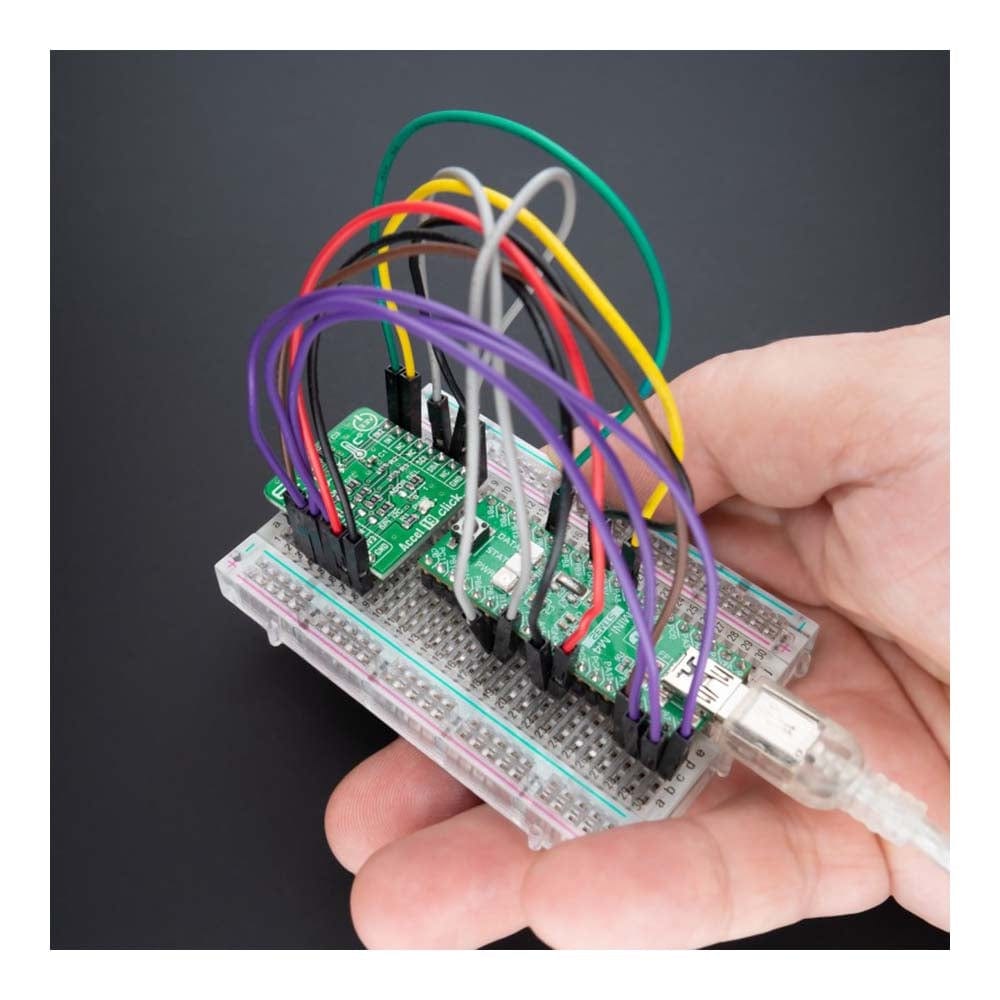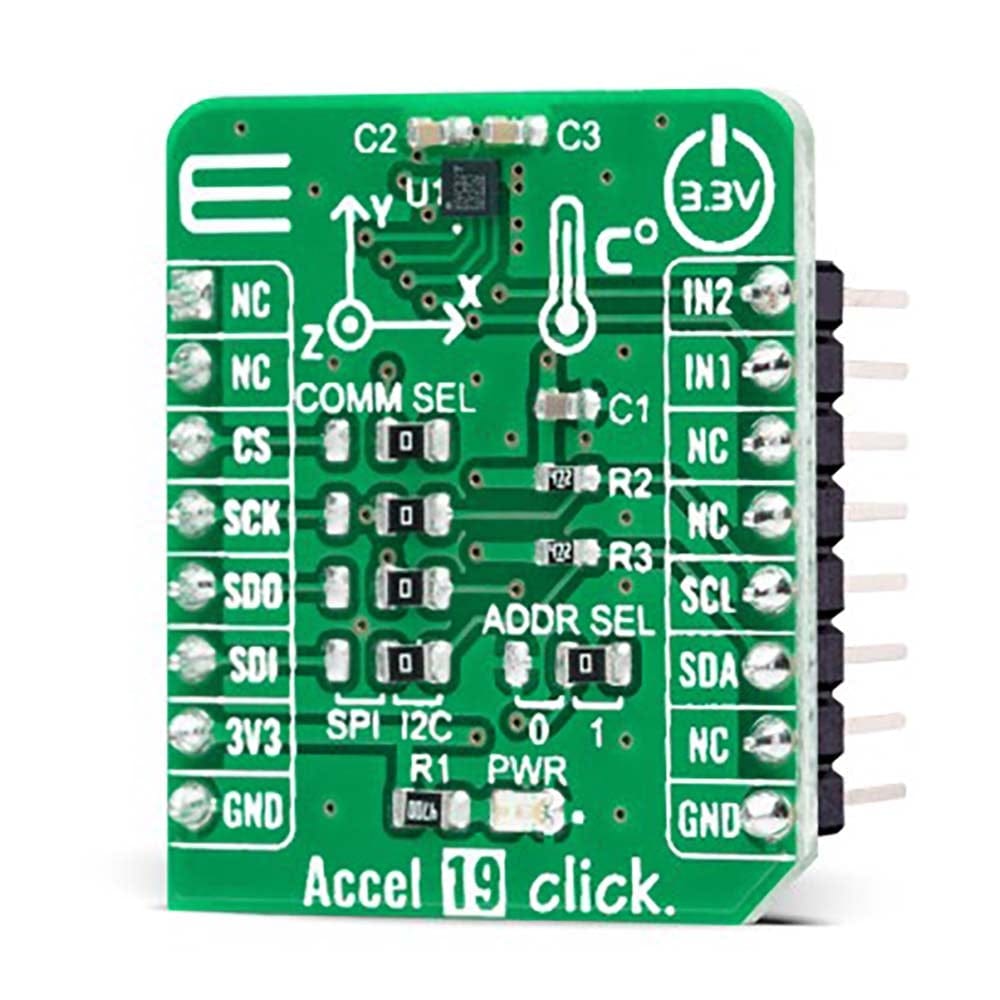
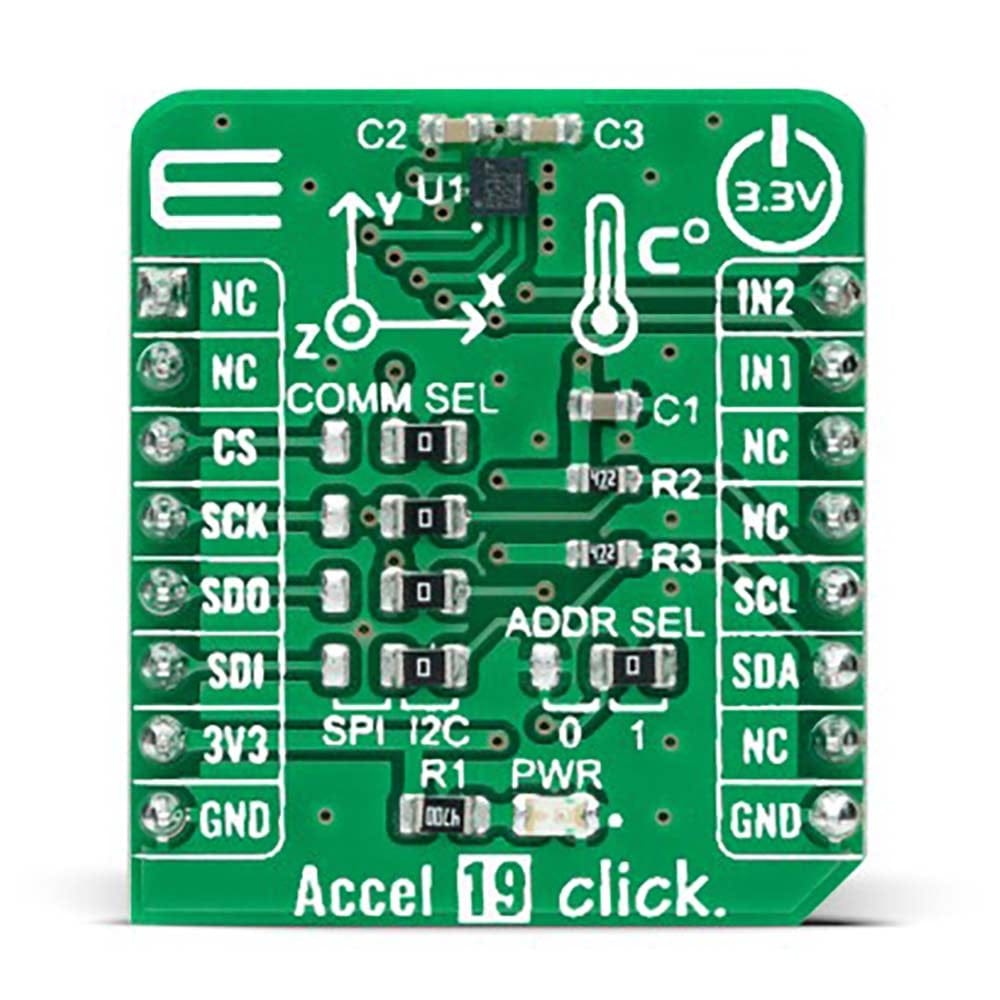
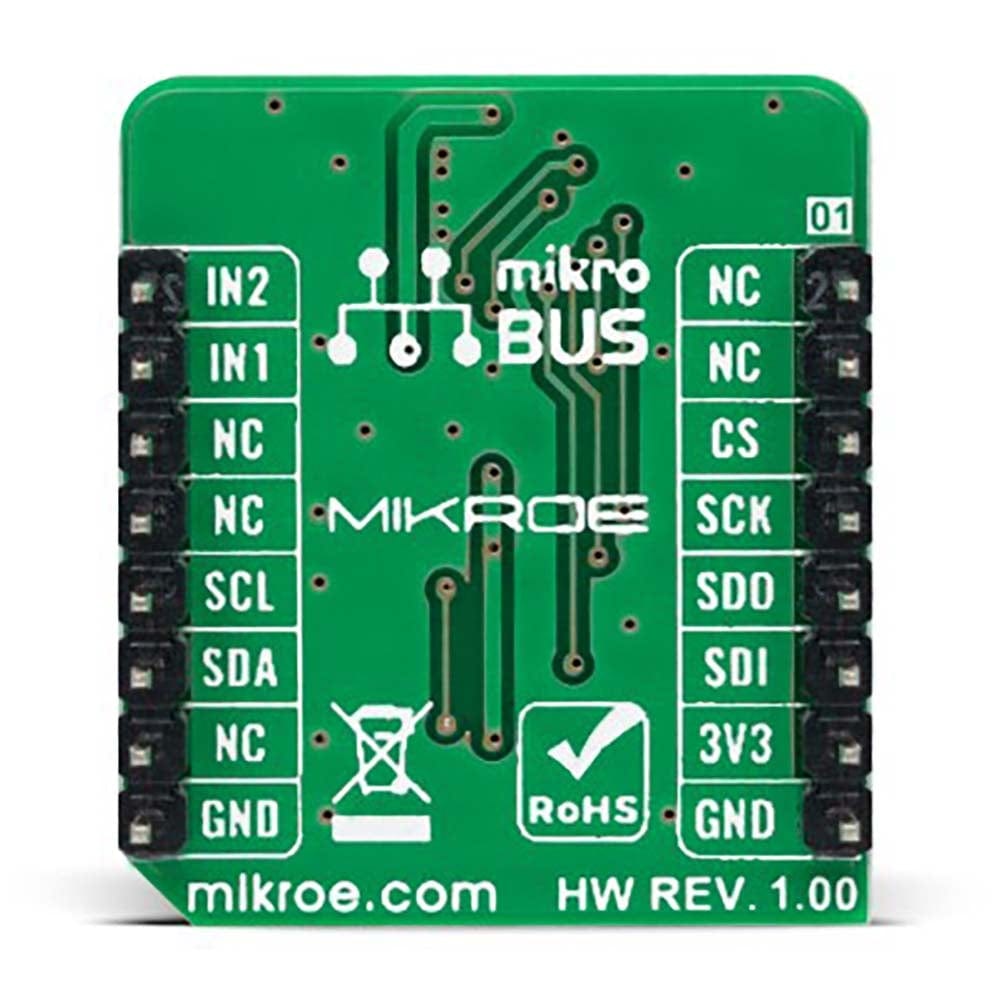
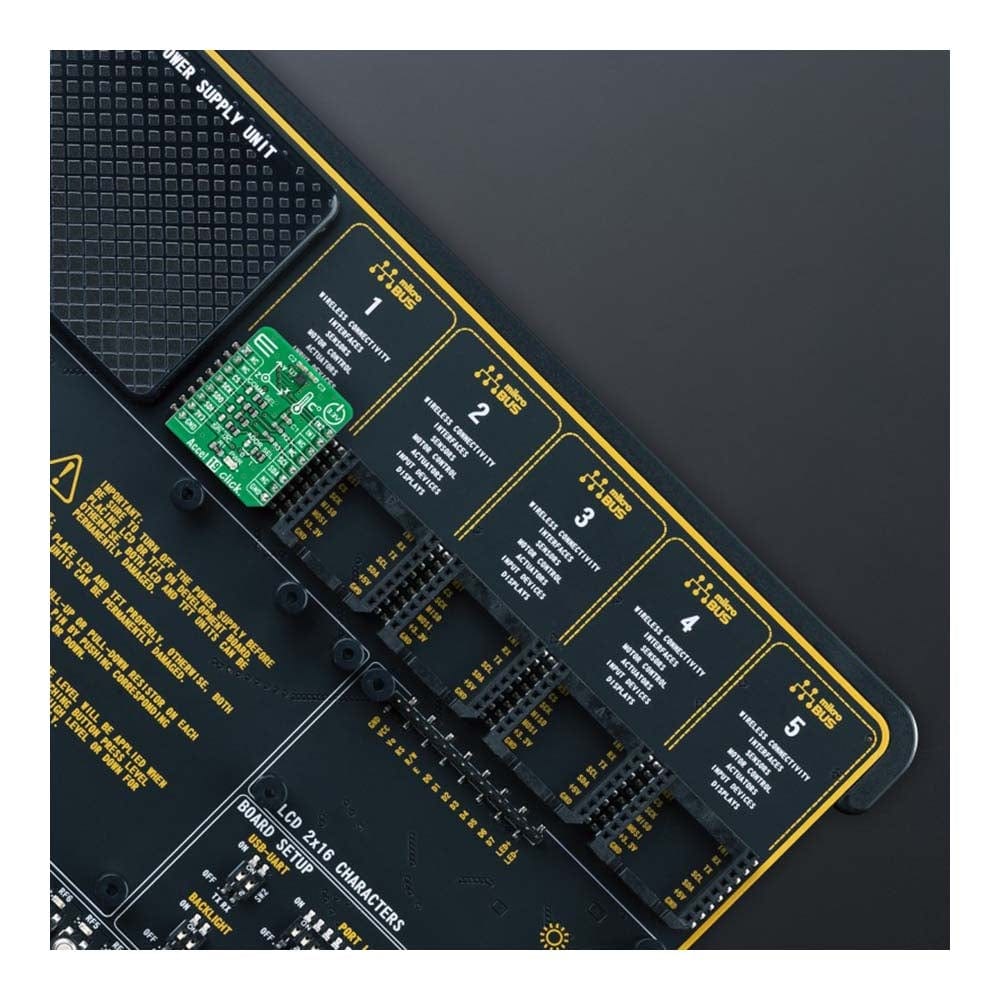
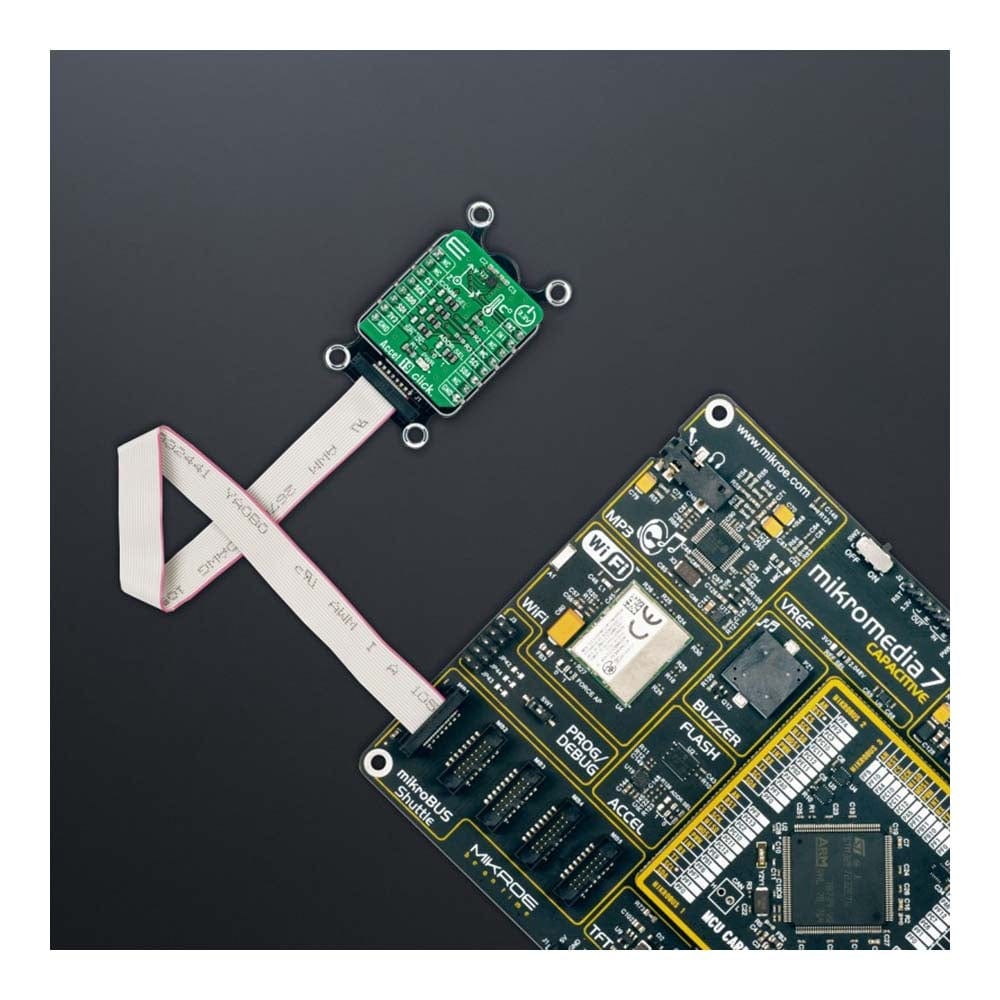
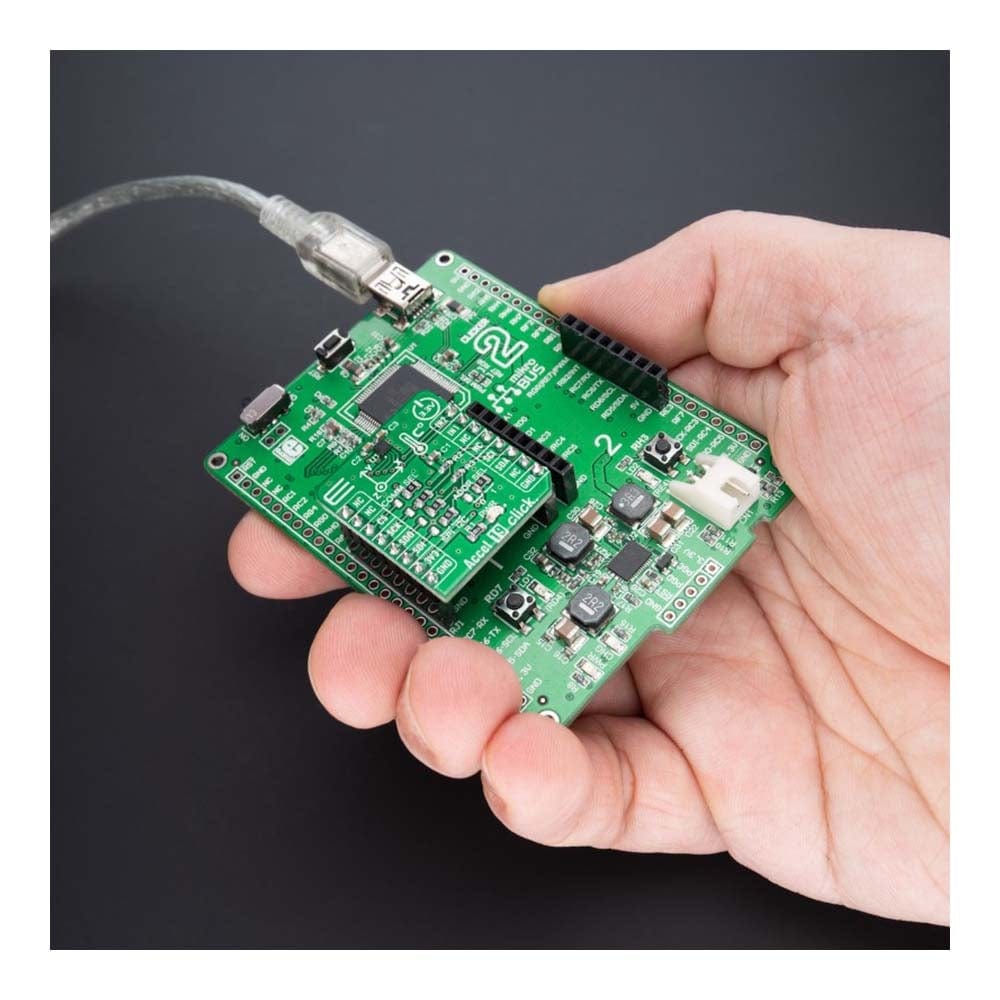
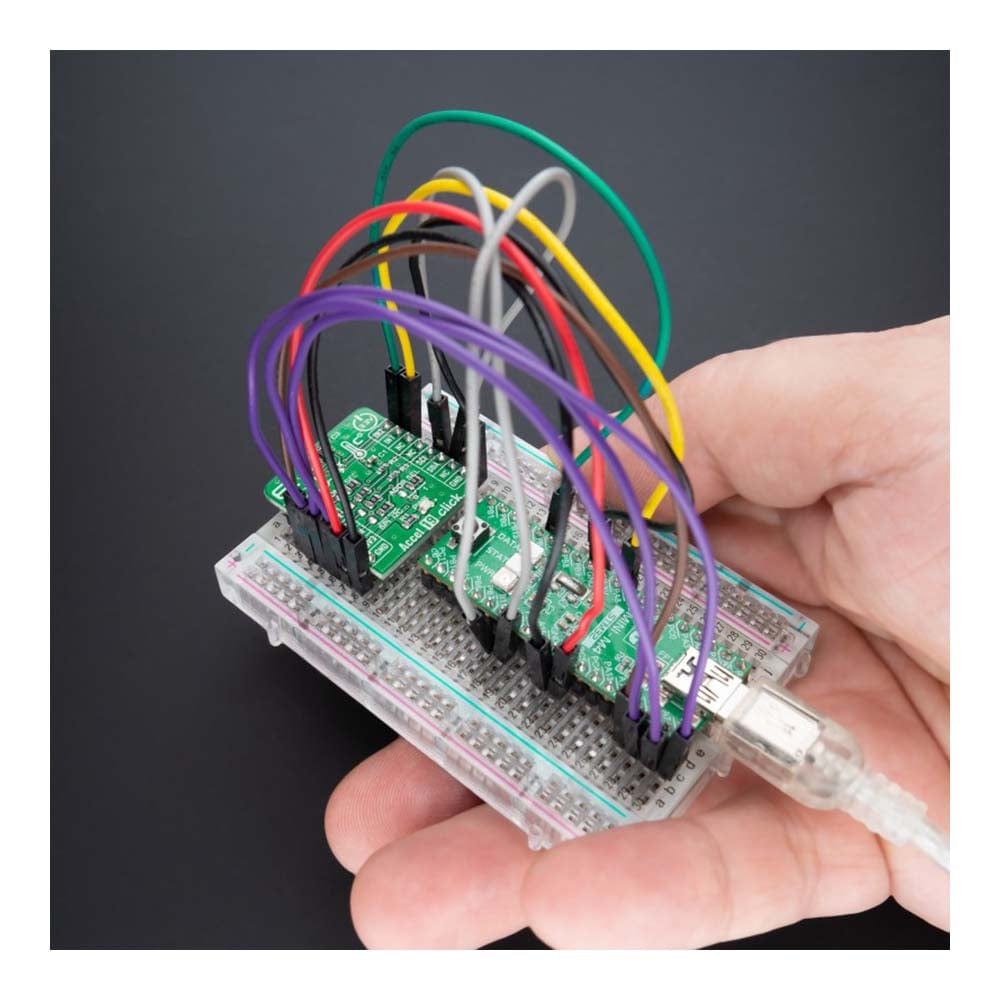
Overview
The Accel 19 Click Board™ is a compact add-on board that contains an acceleration sensor. This board features the LIS2DTW12, an ultra-low-power high-performance three-axis accelerometer from STMicroelectronics. It allows selectable full-scale acceleration measurements in ranges of ±2g, ±4g, ±8g, or ±16g in three axes with a configurable host interface that supports both SPI and I2C serial communication. Alongside an embedded 0.8°C accuracy temperature sensor with ODRs ranging from 50 to 1.6Hz and resolution from 8 to 12 bits, it has a dedicated internal engine to process motion and acceleration detection.
The Accel 19 Click Board™ is suitable for various applications such as motion-activated functions and user interfaces, tap-double-tap recognition, free-fall detection, tracking, and many more.
Downloads
How Does The Accel 19 Click Board™ Work?
The Accel 19 Click Board™ as its foundation uses the LIS2DTW12, a highly reliable digital triaxial acceleration and temperature sensor from STMicroelectronics. The LIS2DTW12 is highly configurable with a programmable acceleration range of ±2g, ±4g, ±8g, or ±16g capable of measuring accelerations with output data rates from 1.6 to 1600Hz. Multiple operating modes with various bandwidths, low noise, very stable sensitivity, together with the capability of working over a wide temperature range, makes this device particularly suitable for vibration monitoring in industrial applications.
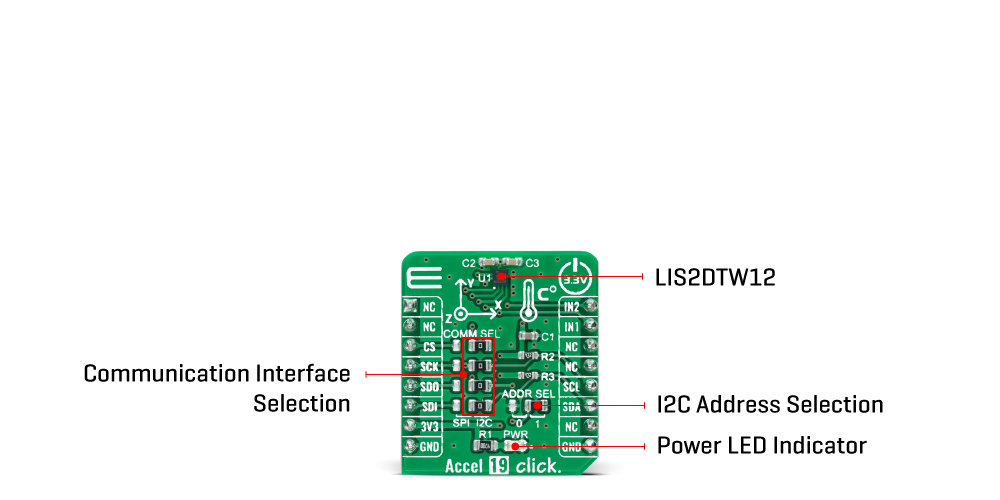
The LIS2DTW12 has an embedded temperature sensor with a typical accuracy of 0.8°C, ODRs ranging from 50 to 1.6Hz, and 8 to 12 bits resolution. Besides, it has an integrated 32-level first-in, first-out (FIFO) buffer allowing the user to store data to limit intervention by the host processor. Alongside these features, the LIS2DTW12 has a dedicated internal engine to process motion and acceleration detection, including free-fall, wakeup, highly configurable single/double-tap recognition, activity/inactivity, stationary/motion detection, portrait/landscape detection, and 6D/4D orientation.
The Accel 19 Click Board™ allows using both I2C and SPI interfaces with a maximum frequency of 3.4MHz for I2C and 10MHz for SPI communication. The selection can be made by positioning SMD jumpers labelled as COMM SEL to an appropriate position. Note that all the jumpers' positions must be on the same side, or the Click board™ may become unresponsive. While the I2C interface is selected, the LIS2DTW12 allows choosing the least significant bit (LSB) of its I2C slave address using the SMD jumper labelled ADDR SEL. The Accel 19 also possesses two interrupts, IN1 and IN2, routed to the INT and PWM pins on the mikroBUS™ socket used to signal MCU that an event has been sensed entirely programmed by the user through the I2C/SPI interface.
The Accel 19 Click Board™ can be operated only with a 3.3V logic voltage level. The board must perform appropriate logic voltage level conversion before using MCUs with different logic levels. However, the Click board™ comes equipped with a library containing functions and an example code that can be used, as a reference, for further development.
SPECIFICATIONS
| Type | Motion |
| Applications | The Accel 19 Click Board™ be used for various applications such as motion-activated functions and user interfaces, tap-double-tap recognition, free-fall detection, tracking, and many more |
| On-board modules | LIS2DTW12 - highly reliable digital triaxial acceleration and temperature sensor from STMicroelectronics |
| Key Features | Low power consumption, high performance and resolution, high reliability, dedicated internal engine to process motion and acceleration detection, integrated interrupt features, selectable serial interface, and more |
| Interface | I2C,SPI |
| Compatibility | mikroBUS |
| Click board size | S (28.6 x 25.4 mm) |
| Input Voltage | 3.3V |
PINOUT DIAGRAM
This table shows how the pinout of the Accel 19 Click Board™ corresponds to the pinout on the mikroBUS™ socket (the latter shown in the two middle columns).
| Notes | Pin |  |
Pin | Notes | |||
|---|---|---|---|---|---|---|---|
| NC | 1 | AN | PWM | 16 | IN2 | Interrupt 2 | |
| NC | 2 | RST | INT | 15 | IN1 | Interrupt 1 | |
| SPI Chip Select | CS | 3 | CS | RX | 14 | NC | |
| SPI Clock | SCK | 4 | SCK | TX | 13 | NC | |
| SPI Data OUT | SDO | 5 | MISO | SCL | 12 | SCL | I2C Clock |
| SPI Data IN | SDI | 6 | MOSI | SDA | 11 | SDA | I2C Data |
| Power Supply | 3.3V | 7 | 3.3V | 5V | 10 | NC | |
| Ground | GND | 8 | GND | GND | 9 | GND | Ground |
ONBOARD SETTINGS AND INDICATORS
| Label | Name | Default | Description |
|---|---|---|---|
| LD1 | PWR | - | Power LED Indicator |
| JP1 | ADDR SEL | Right | I2C Address Selection 0/1: Left position 0, Right position 1 |
| JP2-JP5 | COMM SEL | Right | Communication Interface Selection SPI/I2C: Left position SPI, Right position I2C |
ACCEL 19 CLICK ELECTRICAL SPECIFICATIONS
| Description | Min | Typ | Max | Unit |
|---|---|---|---|---|
| Supply Voltage | - | 3.3 | - | V |
| Acceleration Range | ±2 | - | ±16 | g |
| Sensitivity | 4098 | - | 512 | LSB/g |
| Bandwidth | 0.8 | - | 800 | Hz |
| Resolution | - | 16 | - | bit |
| Operating Temperature Range | -40 | +25 | +85 | °C |
| General Information | |
|---|---|
Part Number (SKU) |
MIKROE-4949
|
Manufacturer |
|
| Physical and Mechanical | |
Weight |
0.02 kg
|
| Other | |
Country of Origin |
|
HS Code Customs Tariff code
|
|
EAN |
8606027389740
|
Warranty |
|
Frequently Asked Questions
Have a Question?
Be the first to ask a question about this.

